| A seldom cultivated South American Iris-like species, sold mostly (at least in the northern hemisphere) as Cypella cœlestis, is here featured. It is not remarkably valuable as an ornamental or edible plant, nor even impressive in cold-hardiness. But I planted one in 2004, took some photos of its lovely blue flowers, and am sharing what little I learned about it. |
| Current scientific consensus is that genus Cypella has some 36 species, the vast majority growing in the Río de la Plata grasslands, the largest complex of subtropical and temperate grassland ecosystems in South America. All are bulbous plants with narrow sword-like leaves; most are yellow flowered. Chromosome count 2n = 14. |
| My featured species, Phalocallis cœlestis, was transferred in 1977 from Cypella to its own genus Phalocallis. Both its blue flowers and molecular genetic studies (2n = 10), support this. It is cultivated more widely than any Cypella species. Seven English names for Phalocallis cœlestis include: Blue Tigridia. Blue Tiger-Iris. Blue Tiger-Lily. South American Iris. Goblet Flower. Shell Flower. Blue Jockey's Cap. It is native in SE Brazil, Uruguay, NE Argentina and SE Paraguay. |
| Phalocallis cœlestis was introduced in the 1800s from the New World to Europe. The first introduction featured flowers that are described variously as lead-blue, dull-blue, blue-gray, or nearly white; that was plumbea --meaning lead colored. In the very late 1800s came platensis (meaning from Río La Plata) with flowers sky-blue, rich azure-blue, light porcelain-blue --accounting for the name cœlestis. This latter introduction is deemed more desirable, and is the kind I planted. |
| Thus there is one species, with varying flower colors, that has been and is sold by nurseries and called by gardeners under several generic names and two specific names. The correct name Phalocallis cœlestis is used relatively rarely --especially in Australia and New Zealand. The bulbs are available mail-order (such as from Telos Rare Bulbs), and the plant can be cultivated in pots indoors in frosty regions, though it is difficult to give them enough light to bloom. So ideally it should grow outside all summer, then the gardener brings the bulbs inside to overwinter. There are Spanish-language sources I found, dating between 1905 and 1993, that state the bulbs are edible. I did not encounter any references to true Cypella (rather than Phalocallis) being eaten. |
The plant I bought in 2004, in Seattle, has markedly glaucous foliage, and attractive but short-lasting flowers from late July into August, usually with only one or two flowers at a time. It makes seedpods but I have not tried to raise seedlings. Nor have I divided the clump or tasted the bulbs. In February 2017, I dug up the bulbs, photographed them, ate one and replanted the rest. An attractive shiny chestnut-brown, the bulbs were small as hazelnuts and tasted bitter as dandelion roots. In short: not worth growing as a food source. My illustrations below show first three photographs of that garden specimen with its winsome sky-blue flowers, and secondly an illustration of the less appealing lead-colored flowers (plumbea) from Curtis Botanical magazine 1839
Back |
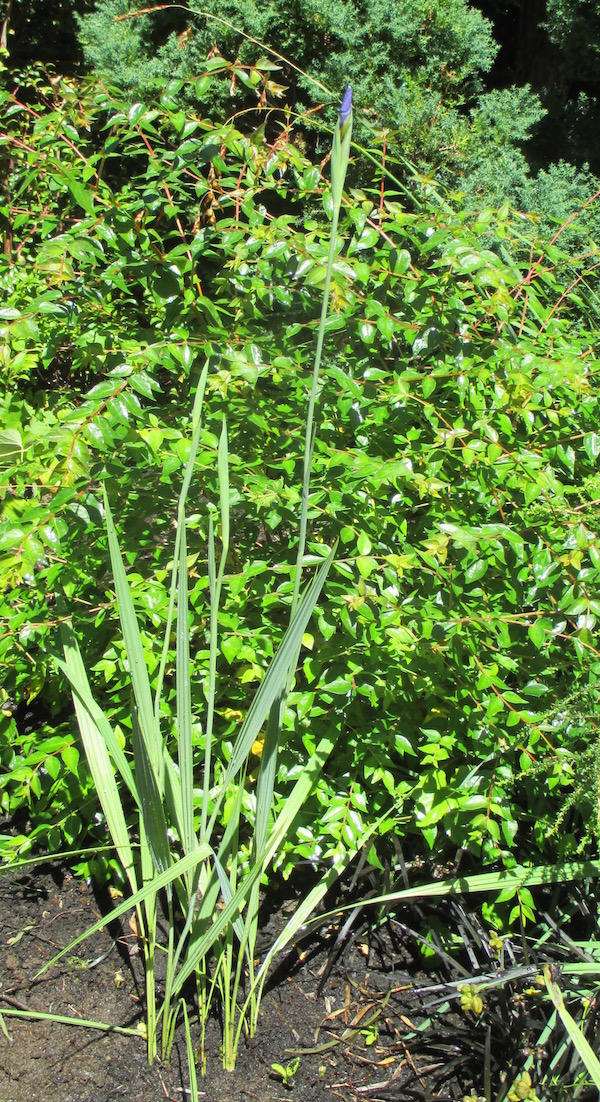
Phalocallis cœlestis ; showing whole plant with one flower bud; photo by ALJ
|
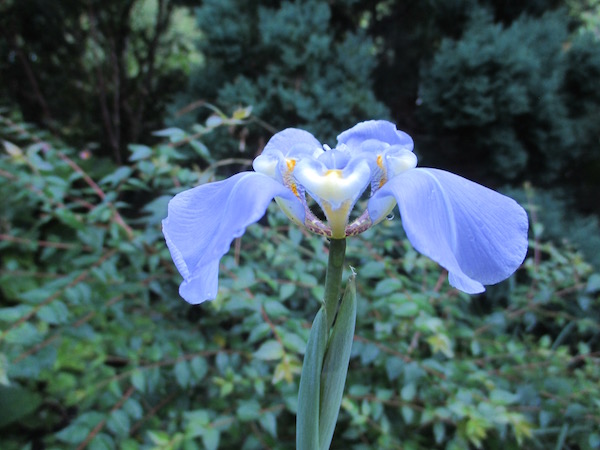
Phalocallis cœlestis ; flower seen from the side; photo by ALJ
|
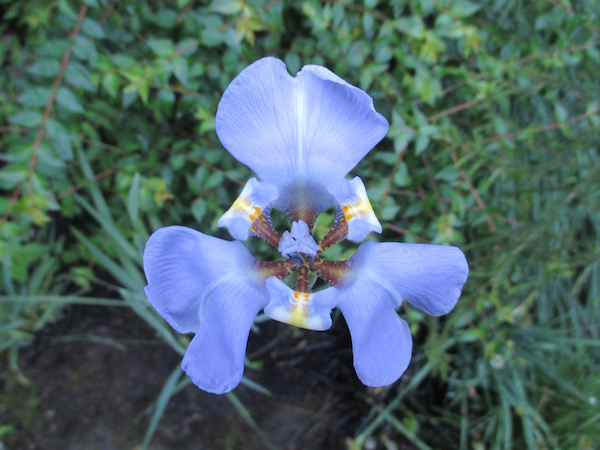
Phalocallis cœlestis ; flower seen from above; photo by ALJ
|
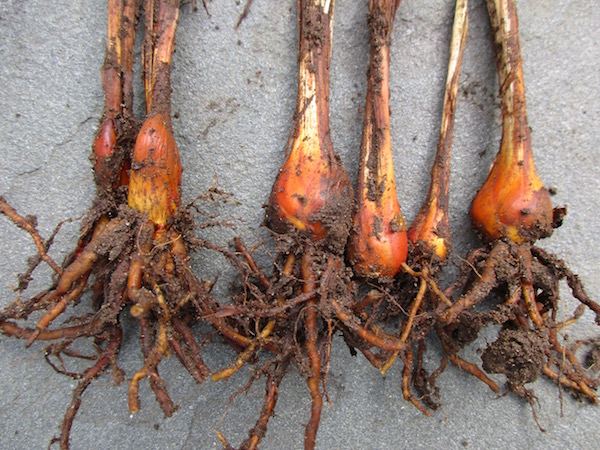
Phalocallis cœlestis ; bulbs dug and exposed; photo by ALJ
|
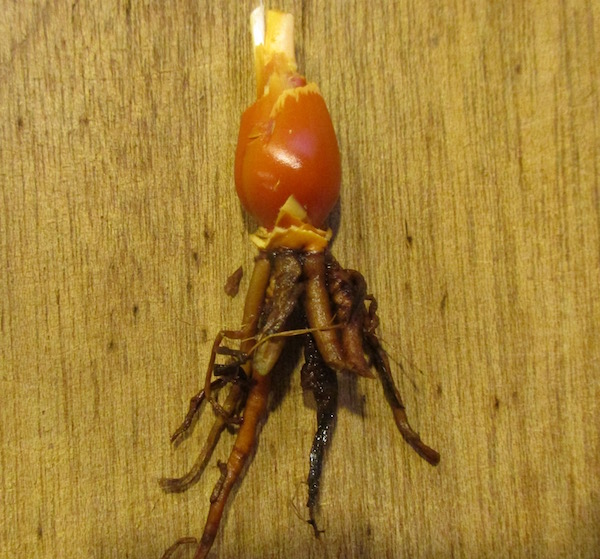
Phalocallis cœlestis ; bulb dug and cleaned to be eaten; photo by ALJ
|
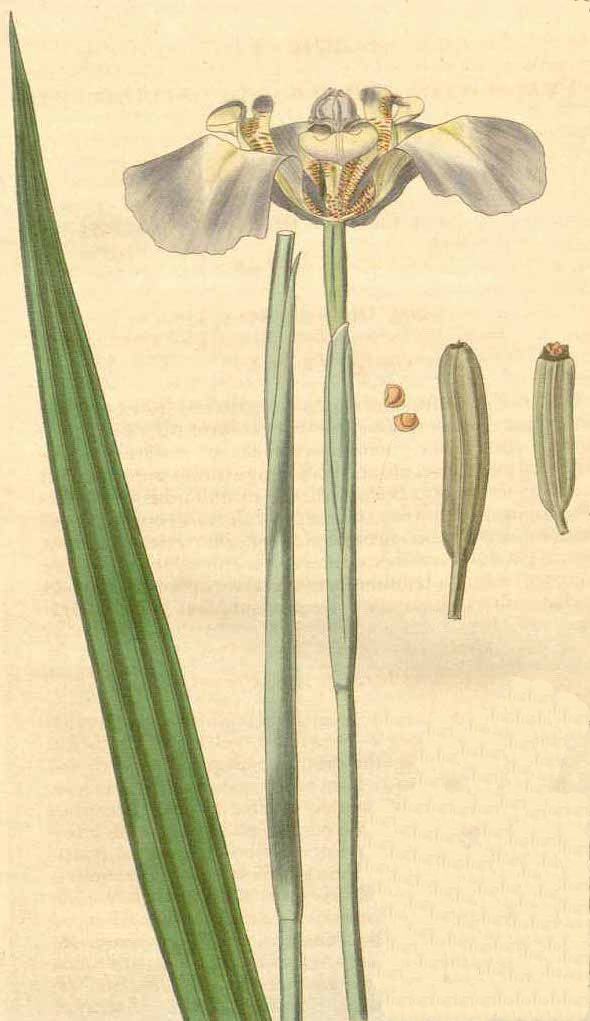
Phalocallis cœlestis plumbea ; from Curtis Bot. magazine 1839
|

